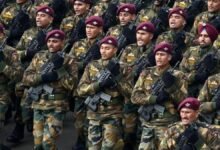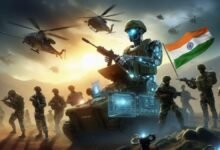ARJUN TANK: A Journey of India’s Main Battle Tank
Understanding the development and importance of Arjun main battle tank

India for decades had relied on imports for its military requirements and tanks are one of those military platforms. At present India operates T-90s, T-72s and Arjun of the main battle tank category. Tanks have remained a crucial component of modern warfare for several reasons. Tanks are based on 3 major components: mobility, armour and firepower. Since their first introduction in World War 1, they have evolved into war machines with heavy firepower and strong armour. These war machines in the present day are known as Main Battle Tanks (MBTs).
The key difference separating MBTs and earlier tanks is that older tanks had specific jobs. There were light tanks for scouting, medium tanks for general combat, heavy tanks for breaking through enemy lines, and tank destroyers for taking out enemy armour. MBTs, on the other hand, are all-rounders. They have a good balance of firepower, mobility, and armour. This makes them easier to manage for militaries because they don’t need as many different types of tanks and simplifies battlefield formations.
Despite the rise of airpower and long-range missiles, tanks still dominate the battlefields. Modern tanks known as Main Battle tanks (MBTs) are equipped with technology such as Night vision, Infrared, Air filtration, Passive countermeasure, autoload canon, remote-controlled external machine gun, digital communication, advanced fire control system, etc. making them a gamer changer on the battlefield. With such technological advancements, these tanks hold the capability to withstand a chemical attack and can walk through radioactive land. India’s quest for a homegrown MBT is a story of ambition, innovation, and perseverance.
The Early Phase of Development of Arjun
Indian Army since 1947 has operated over 7 tanks that included Western and majorly Soviet era and at present operates 3 MBTs.
| Tanks | Country of Origin | Service |
| M5 STUART LIGHT TANK | USA | Inactive |
| M4 SHERMAN | USA | Inactive |
| CENTURIAN | UNITED KINGDOM | Inactive |
| AMX-13 LIGHT TANK | FRANCE | Inactive |
| PT-76 | RUSSIA (Soviet Union) | Inactive |
| T-54/T-55 | RUSSIA (Soviet Union) | Inactive |
| VIJAYANTA | UNITED KINGDOM | Inactive |
| T-72 AJEYA | RUSSIA (Soviet Union) | In Service |
| T-90 BHISHMA | RUSSIA | In Service |
| ARJUN MBT | INDIA | In Service |
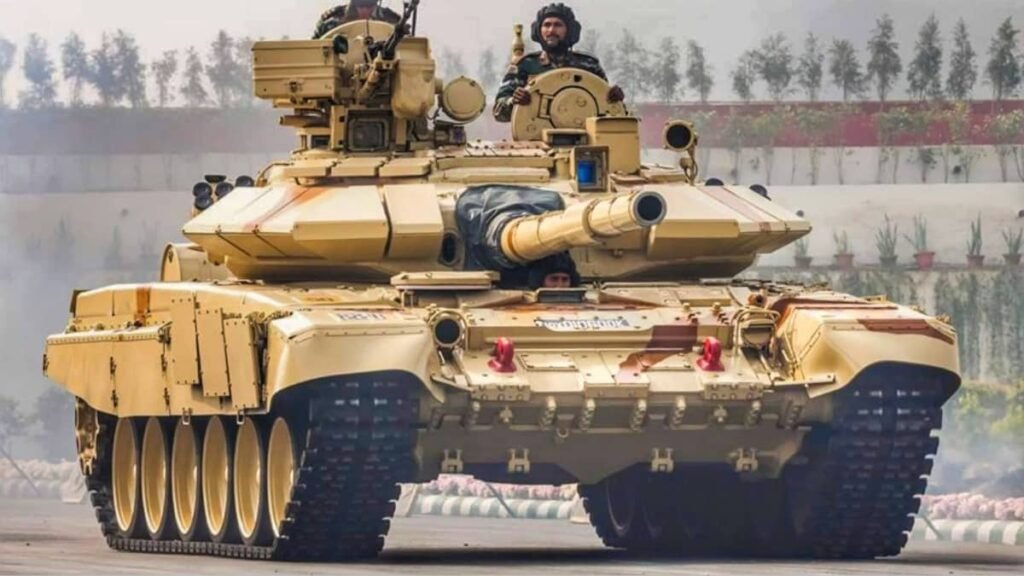
It can be said that Vijayanta tank was the first indigenously developed MBT. But it is worth noting that it was a licenced version of Vickers MK1 which was British MBT. Vijayanta joined the Indian service in 1965 and was phased out by 2008. In the wake of the 1971 war, the need for a domestic tank and independence from foreign reliance became clear. This marked the beginning of the journey of India’s first MBT, named after the legendary archer from the Mahabharata, ‘ARJUN’.
1970s-2000s
Arjun is a third-generation main battle tank for the Indian Army operated by a crew of 4 that includes commander, gunner, driver and loader. For developing India’s first domestic MBT Combat Vehicles Research and Development Establishment (CVRDE) a laboratory under the Defence Research and Development Organisation was established in 1976. By 1983 a consultancy agreement was signed with Krauss Maffei (developer of Leopard 2) to oversee the design, development and evaluation of Arjun.
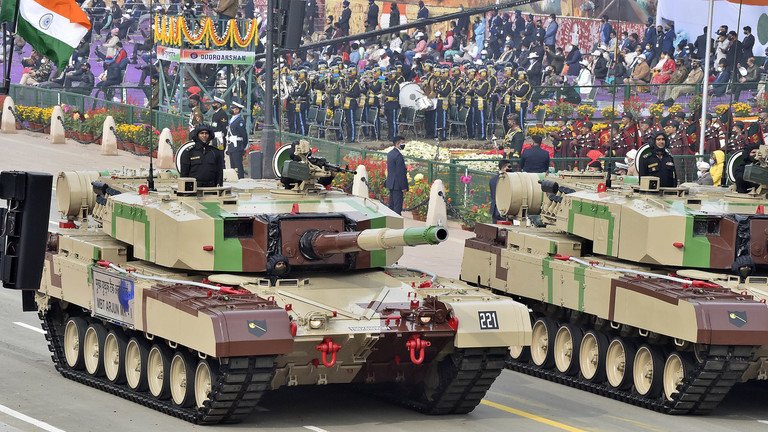
Due to delays, the prototype was rolled out in 1989 which resembles Leo2A4 (German MBT). From 1993 to 1996, the Indian Army carried out extensive trials of prototype tanks. This testing highlighted major issues such as engine overheating and suboptimal performance of the weapon system. With further testing on 14 pre-production series (PPS), the Indian Army identified 10 more shortcomings. By this time the cost of development of MBT which was estimated around ₹464 crore in 1974 raised to ₹18 billion in 1995.
By 1996, the development of PPS-15 was initiated to address the flows listed by the army based on their previous trials. Based on PPS-15 in 1997, the Army and the Cabinet Committee on Security (CCS) granted clearance for limited production. In 2000, the Indian Army placed an order for the procurement of 124 Arjun Mk1 tanks, followed by the serial production beginning in 2003 at Heavy Vehicles Factory (HVF), AVADI.
Major Development achieved with Arjun Tank
Armour and Defensive system
- Arjun MK1 tanks are protected by indigenously developed armour named Kanchan armour. It was designed and developed by the Defence Metallurgical Research Laboratory (DMRL), Kanchanbagh. It was finalised after intensive trials against modern anti-tank munitions, including Armour-piercing fin-stabilised discarding sabot (APFSDS).
- It also has Nuclear, Biological and Chemical (NBC) protection and an automatic fire detection and suppression system for enhanced crew protection and survival.
- The latest M1A version has a completely re-designed Turret which can protect crew against large calibre kinetic energy projectiles. Also, it has Non-Explosive reactive armour (NERA) protection.
- Passive protection by DRDO’s Multi-purpose mobile camouflage system (MCS) has also been integrated. Also,anti-infrared/thermal paint is applied to reduce its IR signature.
- The active protection system is known as Advanced Laser Warning Countermeasure System (ALWCS) with 4 laser warning receivers on the top of the Arjun tank providing 360 protection.
Armament
- Integrated Fire Control System (IFCS), is an indigenous fire control system developed by Bharat Electronics Limited (BEL). This system consists of a ballistic computer that provides the crew with the required data for an accurate firing solution. The IFCS is designed for quick target acquisition with ‘First round First hit probability’. Additionally, this fire control system has been integrated into the licensed T-90s serving the Indian Army.
- Primary weapons of the Arjun consist of its 120 mm rifle gun fitted with a recoil system developed by the Armament Research and Development Establishment (ARDE), a muzzle reference system and a fume extractor. This rifled 120 mm gun is capable of firing a variety of guided and unguided munitions.
- SAMHO: Despite the successful test fire of LAHAT (Israel gun-launched Anti-tank guided missiles), in 2014 discontinuation of the plan was announced with the introduction of SAMHO. SAMHO is an indigenously developed gun-fired anti-tank guided missile. This munition is a dual-purpose guided missile suitable for neutralising targets such as armoured vehicles, tanks, and even low-flying aerial targets at a minimum range of 1.5 km and maximum range of up to 5km.
- Secondary weapons of Arjun MBT include two machine guns, one 12.7mm NSV heavy machine gun mounted in front of the gunner’s hatch for engaging armoured vehicles and low-flying aerial vehicles. A major change to this gun includes that in Mk1 it is operated manually and in mk1A it is operated remotely from inside of the tank. Second machine gun A 7.62 mm coaxial weapon mount (a gun mounted parallel to the main gun).
Other features of Arjun MBT
Currently, both Arjun Mk1 and Mk1A are powered by an MTU 1400 HP diesel engine. This provides the tank with a top speed of 70 km/h. However, due to the sudden closure of MTU, the supply chain has been disrupted and it is expected to take 4 years to resume the delivery of the engine to India.
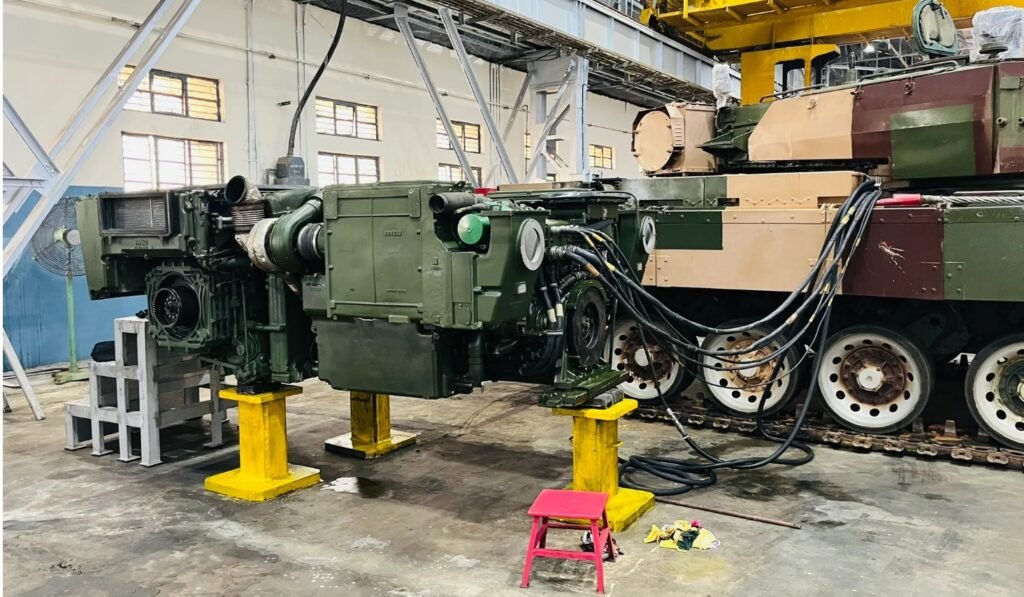
As an alternative and to achieve more indigenisation DRDO developed a 1500 hp turbocharged diesel engine named DATRAN. This engine is currently in its testing phase and has cleared all previous tests. The success of the engine will pave the way for the Future Main Battle Tank (FMBT).
Deployment phase
Arjun (PPS-15) of the 43rd Armoured Regiment made its first public appearance in the 1997 and 2001 Republic Day parade. Since 2004, the Indian Army has been operating 124 Arjun MK1. These tanks are stationed near the western fronts of the nation. Apart from their deployment Arjun Mk1 has participated in multiple wargames and military exercises carried out by the Indian Army. Additionally, in 2010, the Indian Army also conducted a comparative trial of Arjun Mk1 against the imported T-90s tank. This trial focused on subsystem performance, medium fording capability, automotive run and firing trials. In 2013 it was officially revealed that during 2010 comparative trials of the Arjun Mk1, it outperformed T-90.
Way Forward
When compared to other main battle tanks globally, the Arjun stands as a strong competitor, showcasing its capabilities on par with Western tanks such as the Leopard, Challenger, and Abrams. The Arjun tank’s future holds both promise and challenges despite facing initial criticism regarding weight, reliability, and cost. The Arjun’s firepower, armour, and indigenous development remain significant assets. The recent Mk-1A variant addresses some concerns, with a planned lighter hull and integration of Artificial Intelligence for enhanced targeting.
A crucial factor will be the Indian Army’s experience with the Mk-1A variant. If it meets operational needs and performs well compared to its global counterparts, the Arjun could see wider deployment. India’s commitment to Atmanirbhar Bharat is paving the way to achieve indigenisation of the tank. Ultimately, Arjun’s way forward hinges on overcoming logistic challenges while capitalising on its technological prowess. The Mk-1A variant represents a critical step in this direction, and the Army’s experience with it will determine Arjun’s future role in India’s armoured forces.



